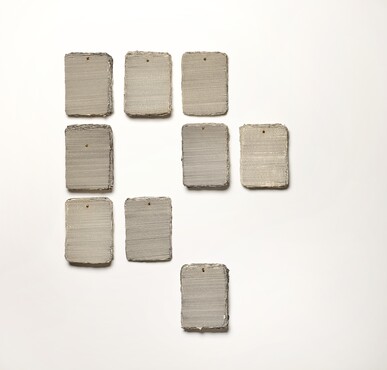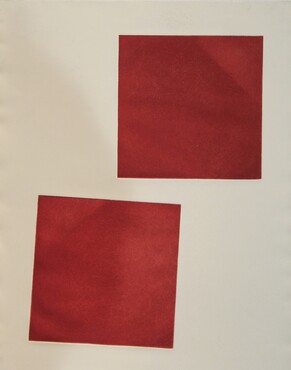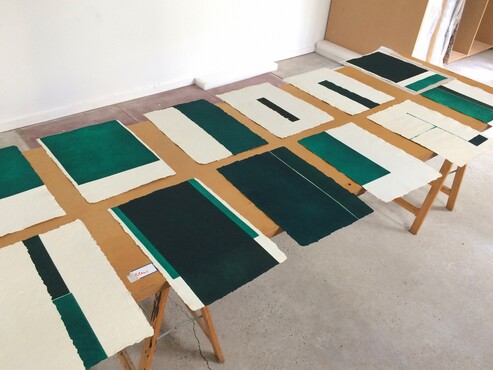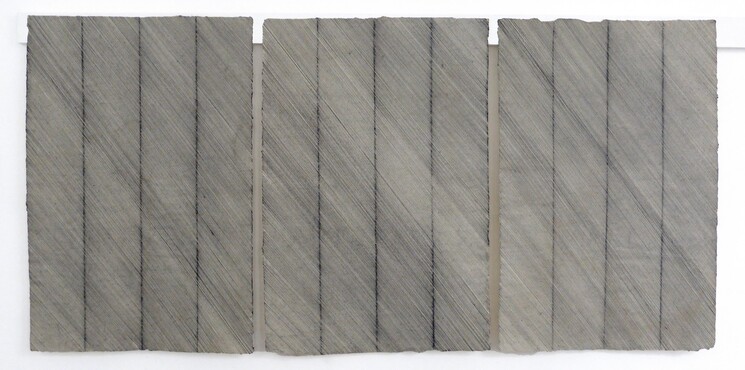Ontdek de collectie
Kunstmuseum Den Haag has a treasure chamber of over 160.000 pieces of art. Here we work on making the highlights from this collection available online.
Marthe Wéry
Sophistication on Paper
The subtle and sophisticated work of Marthe Wéry (1930-2005) owes its effectiveness to its very simplicity. It is all about the expressive power of lines, planes and colour in relation to space. This exhibition in the Berlage Room presents highlights of Wéry’s oeuvre from the 1970s and ’80s – a period when she was working on paper.
Ever since it held Europe’s very first exhibition on Minimal Art in 1968, the Gemeentemuseum Den Haag has displayed a consistent interest in Minimalism. It is this focus that has inspired the Gemeentemuseum’s strong interest in the work of Belgian artist Marthe Wéry. The collection contains a number of pieces by her and the museum held major solo exhibitions of her work in 1986-’87 and 2011.
Over many years, Wéry was inspired by paper to create a variety of unique forms of artistic expression, in which the visual experience is always paramount. She used Indian ink to inscribe serene straight lines on handmade paper, the various types and sizes of which contribute to the expressive power of the work. It may be smooth, formal and rational in appearance or, on the contrary, lumpy, tactile and sensually appealing. Wéry used folds in the paper to accentuate or interrupt the drawn lines or, in other works, soaked the paper in acrylic paint and carefully controlled the resulting colour gradient. She frequently created works on two, three or even more panels, installing them in such a way as to create a rhythmic harmony with the surrounding architectural space.
Around 1980, the lines gave way to letters or text. Wéry took texts by people like French artist Henri Matisse or American author Gertrude Stein as the points of departure for what she called her écritures. She also produced aquatints featuring compositions in which coloured geometrical planes interact with the white of the paper. When she began to stack drawings, placing them in bundles on a shelf, hanging them on the wall or standing them on the floor, they functioned as three-dimensional works.
Visitors to the exhibition in the Berlage Room will appreciate the poetry of the subtle relationships between the lines and planes and the interaction of the works with the architecture of the space. Given time and focused attention, the works engender a sense of joyful wonder. But it’s easily missed. The sensitivity and intelligence of her work – both worldly and non-material – reveals itself only to a quiet and open mind.
Marthe Wéry ranks as one of Belgium’s most important modern artists. After studying painting at La Grande Chaumière in Paris, she spent her entire working life in Brussels. She participated in major international art events such as Documenta 6 in Kassel (1977) and represented Belgium at the Venice Biennale (1982). In order to create this sophisticated presentation (which includes only one work from the museum’s own collection), the Gemeentemuseum was granted access to the extraordinary collection of Marthe Wéry’s work in the hands of the artist’s family.





